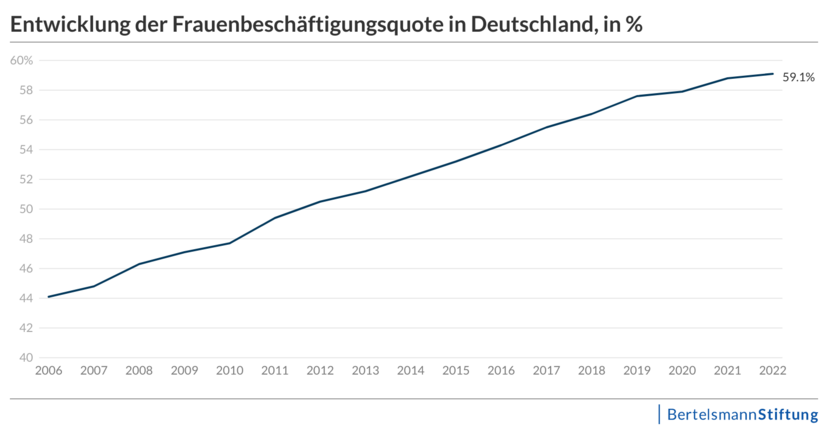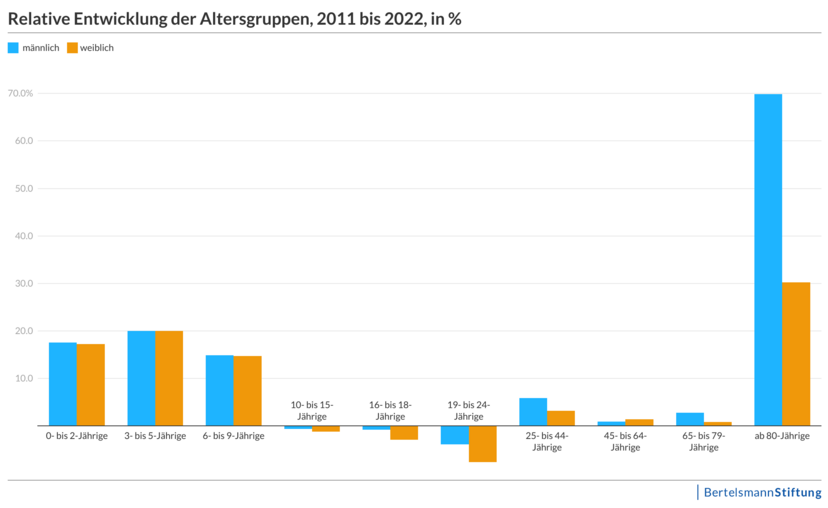The annual update of the Wegweiser Kommune is now complete. That means the data – which mostly comes from Germany’s federal and state statistical offices and the Federal Employment Agency – can now be accessed for the year 2022. The portal’s historical data alone covers 14 different topics comprised of more than 320 individual indicators. From employment figures for women to birth rates to a city or town’s net number of commuters, information is available for all German communities with more than 5,000 inhabitants. The detailed breakdown facilitates precise analyses and comparisons of developments affecting 89 percent of the German population. Information has also been updated on territorial changes as of January 1, 2023.

geralt / Pixabay – Pixabay License, https://pixabay.com/de/service/license/
Updated data in Wegweiser Kommune
The Wegweiser Kommune (Community Roadmap) portal has been updated, with data for the year 2022 now available for all 14 topics.
Content
More women in the workforce, especially in eastern Germany
The data update reveals a number of interesting developments. For example, the positive trend in female employment continues – having reached a long-term high of 59.1 percent in 2022.
Regional differences in this indicator are also striking. The communities with the highest rates of employment for women are all located in the country’s eastern states. Greater acceptance of gender equality is often cited as a possible reason for the difference, as are lower birth rates and lower household incomes. The latter often make it necessary for women to enter the workforce.
Functional age groups also available for 2022
In addition, our 10 functional age groups (an additional 90 indicators) are now available for 2022, the latest year published by the state statistical offices.
The 10 functional age groups were developed to provide local administrators with population data as input for their planning. The groupings are simplifications, since it is possible, for example, to complete vocational training at the age of 40 or still be gainfully employed at the age of 70. Nevertheless, the 10 age groups can be useful for planning purposes. This data is available in the form of 90 indicators (population by age group, share of age group, development of age group) and as a chart showing the population structure by age group.
The data shows that although the age groups 0-2, 3-5 and 6-9 years have exhibited moderate growth in Germany since 2011, the largest increases can be found in the group of people over 80, especially men.
The data shows thatMore information is available at www.wegweiser-kommune.de. although the age groups 0-2, 3-5 and 6-9 years have exhibited moderate growth in Germany since 2011, the largest increases can be found in the group of people over 80, especially men.
These and similar charts can be created using the Wegweiser Kommune for all communities in Germany with more than 5,000 inhabitants. Anyone who wants to know how a specific city or town is developing should take a look at the updated data portal.
More information is available at www.wegweiser-kommune.de.






![[Translate to English:] Landschaft](/fileadmin/files/_processed_/9/0/csm_AdobeStock_252046738_KONZERN_ST-CC_bearb_Original_96691_abf5b7c75d.jpg)
![[Translate to English:] Ein Landwirt steht in einem Feld und hält ein Tablet in der Hand](/fileadmin/files/_processed_/4/b/csm_AdobeStock_274990218_KONZERN_ST-LK_Original_97477_c1986149e9.jpeg)



